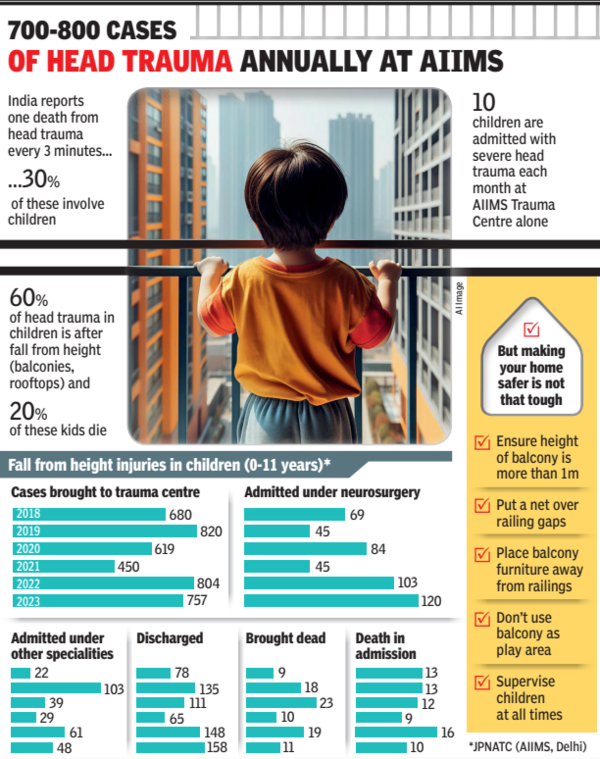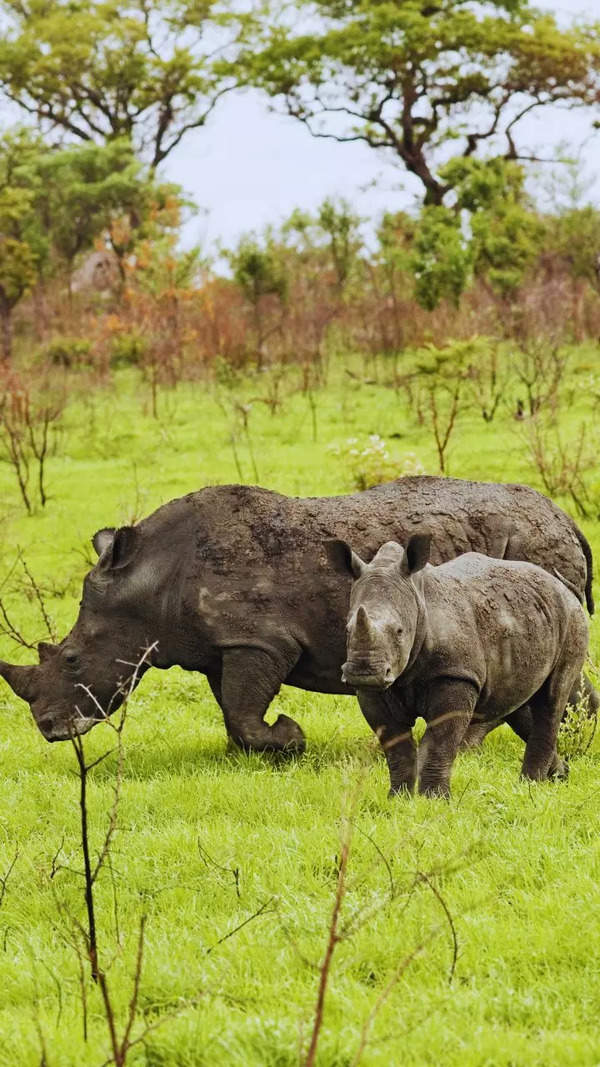- News
- City News
- delhi News
- Children can’t fly! What you can do to prevent fall from heights
Trending
Children can’t fly! What you can do to prevent fall from heights
AIIMS reports over 4,000 children injured and 151 fatalities from falls in the last six years. Experts are convening to discuss preventive measures, particularly for balcony falls, under the 'Safe Balcony Safe Child Initiative'.
NEW DELHI: Over 4,000 children suffered injuries after falling from heights, with 151 fatalities recorded before or upon arrival at AIIMS in the past six years, according to Jai Prakash Narayan Apex Trauma Centre at AIIMS.
The medical team plans to discuss preventive measures, particularly focused on balcony-related falls among children under the 'Safe Balcony Safe Child Initiative' at a round table symposium on Saturday at the ongoing 8th AIIMS Annual Neurotrauma Conference, which began on Thursday. Twenty international faculty members will participate to explore improvements in this area.

Professor Deepak Gupta of the AIIMS neurosurgery department shared data showing 680 children were brought to the trauma centre in 2018 after falling from heights. Among them, 69 were admitted to neurosurgery and 22 to other specialities, including trauma and orthopaedic surgery for limb and abdominal trauma. Nine arrived deceased, 13 died during hospitalisation and 78 were discharged. Children fall patients brought to the trauma centre in subsequent years were 820 in 2019, 619 in 2020, 450 in 2021, 804 in 2022 and 757 in 2023.
The doctor noted no reduction in head trauma cases since launching the ‘Safe Balcony, Safe Child' campaign in 2022, with 700-800 head trauma children arriving at emergency annually. He referenced the US campaign on ‘Kids Cannot Fly' from the 1970s, which achieved a 96% reduction after 16 years, suggesting India could achieve similar results.
Gupta emphasised the necessity for behavioural changes and building reforms with govt intervention. Recommendations include minimum balcony height of one metre, vertical rather than horizontal rails, gaps between vertical bars under 4 inches, furniture-free balconies and adult supervision requirements. Govt guidelines for high-rise buildings need revision to address rural areas lacking roof parapets.
Most trauma centre cases originated in NCR cities, including Greater Noida, Ghaziabad, Mewat and Nuh.
Professor Amit Gupta of AIIMS clarified this wasn't solely an urban issue, with patients arriving from both urban and rural areas within Delhi and NCR region. He stressed the importance of dedicated trauma databases at all trauma centres for policy changes and preventive measures. Currently, the AIIMS trauma centre leads an ICMR National Task Force project involving eight centres, including KGMU, Lucknow, AIIMS, Patna, Jawaharlal Institute of Postgraduate Medical Education & Research and CMC for data registration. This supports quality improvement, policy formation, and preventive measures.
End of Article
FOLLOW US ON SOCIAL MEDIA








